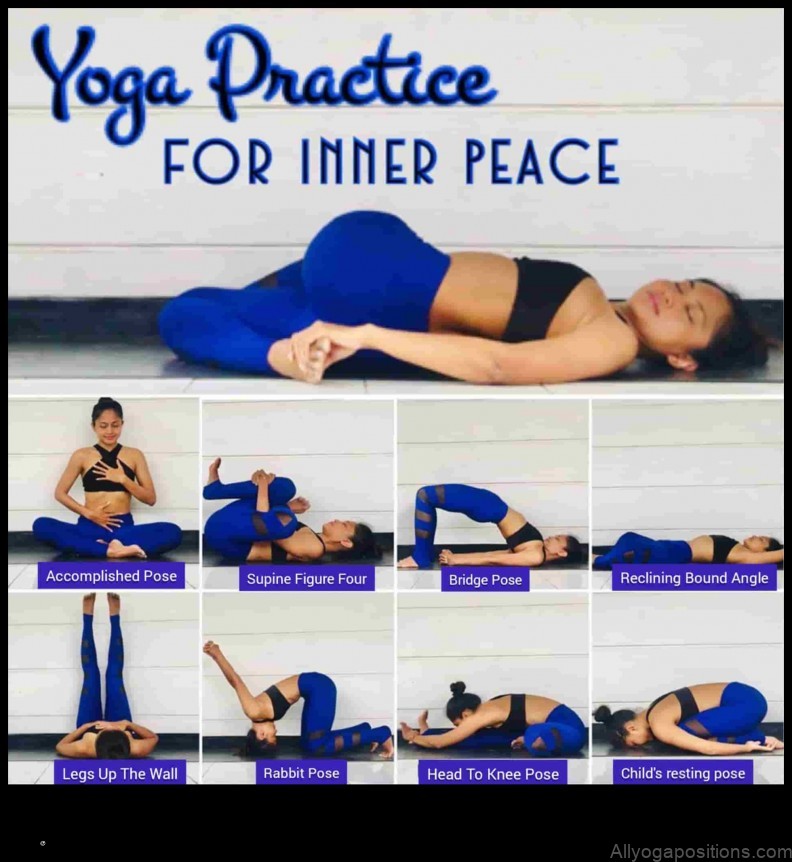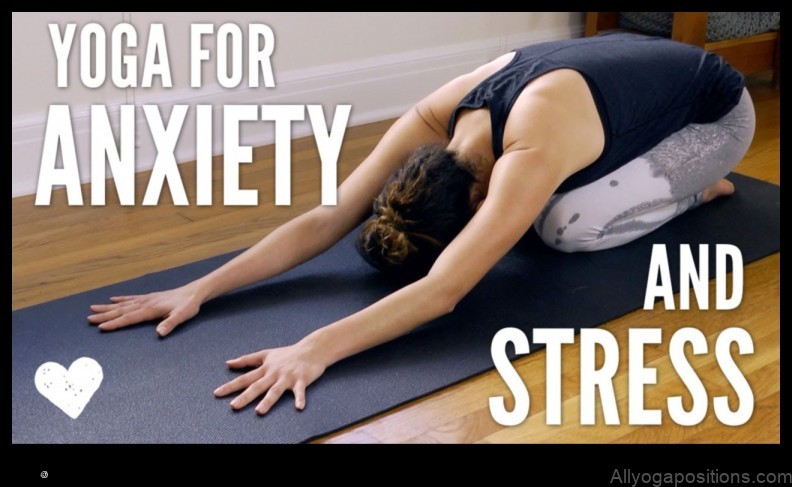
< lang="en">
Yoga for Anxiety: Calming Practices
Anxiety is a common experience that can have a significant impact on our physical and mental health. Yoga is a mind-body practice that has been shown to have a number of benefits for people with anxiety, including reducing stress, improving mood, and increasing relaxation.
This article will provide an overview of the benefits of yoga for anxiety, as well as tips for getting started with a yoga practice. We will also discuss some common myths about yoga and anxiety.

Benefits of Yoga for Anxiety
Yoga has been shown to have a number of benefits for people with anxiety, including:
- Reduced stress
- Improved mood
- Increased relaxation
- Improved sleep
- Enhanced self-awareness
- Increased mindfulness
Yoga can help to reduce stress by promoting relaxation and mindfulness. It can also help to improve mood by increasing serotonin and dopamine levels. Yoga can also help to improve sleep by reducing stress and promoting relaxation.
Yoga is a safe and effective way to manage anxiety. It is a gentle exercise that can be adapted to any level of fitness. Yoga can be practiced at home or in a studio.
Tips for Getting Started with Yoga for Anxiety
If you are new to yoga, it is important to start slowly and gradually increase the intensity of your practice. You should also choose a style of yoga that is appropriate for your fitness level and needs.
Here are some tips for getting started with yoga for anxiety:
- Start with a beginner class.
- Listen to your body and modify poses as needed.
- Practice yoga regularly.
- Make time for relaxation and mindfulness.
- Be patient with yourself.
Yoga is a lifelong practice. It takes time to see results. Be patient with yourself and enjoy the journey.

Common Myths About Yoga and Anxiety
There are a number of myths about yoga and anxiety that can prevent people from trying it. These myths include:
- Yoga is only for flexible people.
- Yoga is a religion.
- Yoga is too expensive.
- Yoga is too time-consuming.
These myths are simply not true. Yoga is for everyone, regardless of age, flexibility, or fitness level. Yoga is not a religion. It is a mind-body practice that can be practiced by people of all faiths. Yoga can be affordable. There are many free or low-cost yoga classes available. Yoga does not have to be time-consuming. You can practice yoga for as little as 10 minutes per day.
If you are struggling with anxiety, yoga can be a helpful tool for managing your symptoms. It is a safe and effective way to reduce stress, improve mood, and increase relaxation. If you are interested in trying yoga for anxiety, there are many resources available to help you get started.
Resources for Practicing Yoga for Anxiety
There are many resources available to help you get started with yoga for anxiety. These include:
- Yoga books
- Yoga DVDs
- Yoga apps
- Yoga studios
You can also find many free yoga classes online.
FAQ
Q: What is the difference between yoga and meditation?
Yoga and meditation are both mind-body practices that can have a number of benefits for people with anxiety. However,
| Topic | Features |
|---|---|
| Anxiety | Stress, worry, panic attacks |
| Calming yoga | Relaxation, stress relief |
| Yoga for anxiety | Reduce anxiety, improve mental health |
| Stress relief | Relaxation, reduce stress |
| Mindfulness | Present moment awareness, focus |
II. What is Yoga?
Yoga is a mind-body practice that originated in ancient India. It combines physical postures, breathing exercises, and meditation. Yoga can be practiced for a variety of reasons, including improving physical and mental health, reducing stress, and increasing flexibility.
There are many different types of yoga, each with its own unique benefits. Some of the most popular types of yoga for anxiety include:
- Hatha yoga
- Vinyasa yoga
- Yin yoga
- Yoga nidra
If you are new to yoga, it is a good idea to start with a beginner class. This will help you learn the basics of yoga and how to do the poses safely. You can find beginner yoga classes at most gyms, yoga studios, and community centers.
Once you have learned the basics of yoga, you can start to experiment with different types of yoga to find the one that works best for you. You can also practice yoga at home with the help of books, DVDs, or online classes.
III. How Does Yoga Help Relieve Anxiety?
Yoga is a mind-body practice that combines physical postures, breathing exercises, and meditation. It has been shown to have a number of benefits for people with anxiety, including:
- Reduced stress and anxiety levels
- Improved mood and self-esteem
- Increased relaxation and mindfulness
- Improved sleep quality
- Enhanced physical and mental health
Yoga can help to relieve anxiety by:
- Relaxing the body and mind
- Boosting mood and self-esteem
- Teaching coping mechanisms for stress
- Providing a sense of community and support
If you are interested in trying yoga to help relieve your anxiety, it is important to find a class that is appropriate for your needs and experience level. There are many different types of yoga, so it is important to find one that you enjoy and that you feel comfortable doing. You can also find many resources online to help you learn yoga at home.
IV. The Benefits of Yoga for Anxiety
Yoga has been shown to have a number of benefits for people with anxiety, including:
* Reducing stress and anxiety levels
* Improving mood and well-being
* Increasing mindfulness and self-awareness
* Improving sleep quality
* Reducing pain
* Boosting the immune system
* Improving flexibility and balance
* Increasing strength
Yoga can also help to manage the symptoms of anxiety, such as racing thoughts, muscle tension, and difficulty breathing.
V. Types of Yoga for Anxiety
There are many different types of yoga that can be helpful for anxiety. Some of the most popular types include:
- Hatha yoga
- Vinyasa yoga
- Yin yoga
- Kundalini yoga
- Bikram yoga
Each type of yoga has its own unique benefits, and the best type for you will depend on your individual needs and preferences. If you are new to yoga, it is a good idea to try out a few different types to see what you like best.
Here is a brief overview of each type of yoga and its benefits for anxiety:
- Hatha yoga is a gentle form of yoga that focuses on poses that are held for longer periods of time. It is a good choice for beginners or for people who are looking for a more relaxed yoga practice.
- Vinyasa yoga is a more dynamic form of yoga that flows from one pose to the next. It is a good choice for people who are looking for a more challenging yoga practice.
- Yin yoga is a slow and meditative form of yoga that focuses on holding poses for long periods of time. It is a good choice for people who are looking for a deep relaxation experience.
- Kundalini yoga is a powerful form of yoga that involves chanting, meditation, and breathwork. It is a good choice for people who are looking for a more spiritual yoga practice.
- Bikram yoga is a hot yoga practice that is done in a heated room. It is a good choice for people who are looking for a challenging yoga practice that can help them to sweat out toxins.
No matter which type of yoga you choose, it is important to find a class that is right for you and to practice regularly in order to see the benefits.
VI. How to Start Practicing Yoga for AnxietyIf you are new to yoga, it is important to start slowly and gradually increase the intensity and duration of your practice as you feel comfortable. Here are a few tips for getting started:
- Find a beginner yoga class or program that is tailored to your needs and experience level.
- Listen to your body and modify poses as needed. There is no need to push yourself beyond your limits.
- Focus on your breath and relaxation. Yoga is not about being perfect. It is about connecting with your body and mind and finding peace and tranquility.
- Practice yoga regularly. The more you practice, the more benefits you will experience.
Yoga can be a powerful tool for relieving anxiety. By following these tips, you can safely and effectively start your yoga journey and begin to experience the many benefits of this ancient practice.
VII. Tips for Getting the Most Out of Yoga for Anxiety
Here are some tips for getting the most out of yoga for anxiety:
- Start slowly and gradually increase the intensity of your practice as you feel comfortable.
- Listen to your body and don’t push yourself too hard.
- Find a yoga teacher who is experienced in working with people with anxiety.
- Practice yoga in a supportive environment, such as a yoga studio or with a group of friends.
- Make yoga a regular part of your routine.
Yoga can be a helpful tool for managing anxiety, but it is not a cure-all. If you are struggling with anxiety, it is important to seek professional help in addition to practicing yoga.
Common Myths About Yoga and Anxiety
There are a number of myths about yoga and anxiety that can prevent people from trying it as a treatment option. Some of these myths include:
- Yoga is only for people who are flexible.
- Yoga is too slow and gentle to be effective for anxiety.
- Yoga is a religion.
- Yoga is only for women.
None of these myths are true. Yoga is a practice that can be beneficial for people of all ages, fitness levels, and religions. It is not necessary to be flexible to do yoga, and it can be adapted to meet the needs of individual practitioners. Yoga is not a religion, and it is not only for women.
If you are interested in trying yoga for anxiety, it is important to find a qualified instructor who can help you learn the basics of the practice and how to adapt it to your individual needs.
IX. Resources for Practicing Yoga for AnxietyHere are some resources that you may find helpful in practicing yoga for anxiety:
- Yoga Journal: Yoga for Anxiety
- Mindful: Yoga for Anxiety
- WebMD: Yoga for Anxiety
- Mayo Clinic: Yoga for Anxiety
You can also find many helpful resources on YouTube and other online platforms.
FAQ
Q: What are the benefits of yoga for anxiety?
A: Yoga can help to relieve anxiety by reducing stress, improving mood, and increasing mindfulness.
Q: What are some calming yoga poses?
A: Some calming yoga poses include child’s pose, savasana, and cat/cow pose.
Q: How often should I do yoga to relieve anxiety?
A: It is generally recommended to do yoga at least twice per week to see benefits for anxiety.
Q: What are some other ways to relieve anxiety?
Some other ways to relieve anxiety include exercise, meditation, and spending time in nature.
Table of Contents
